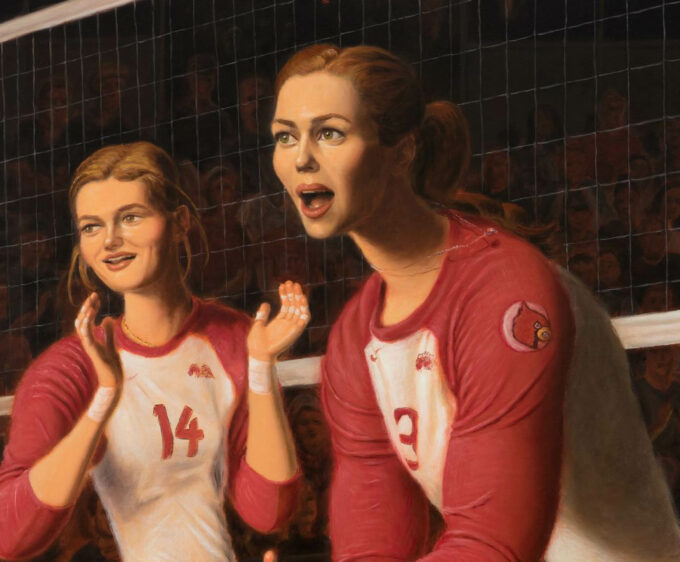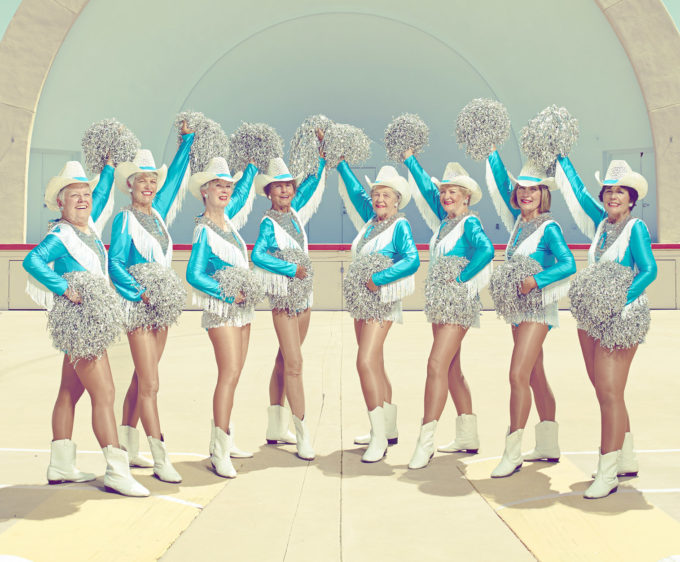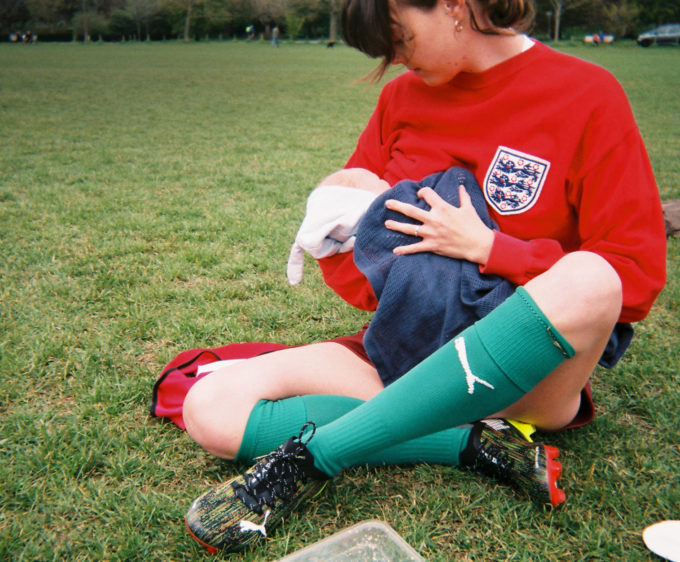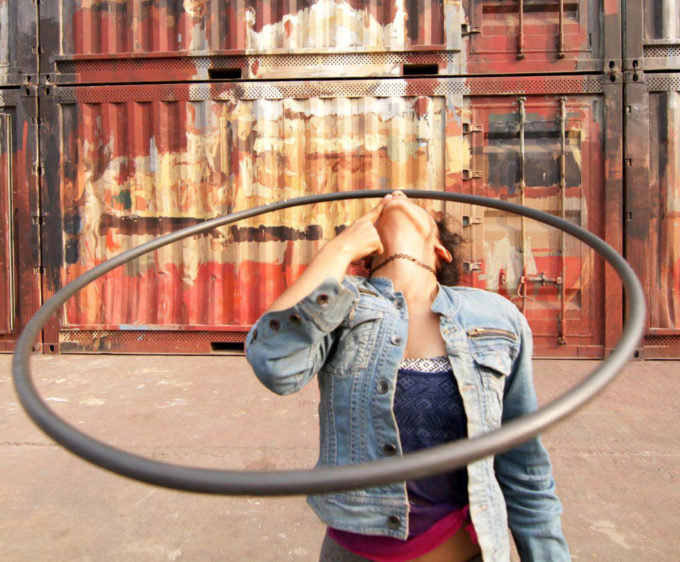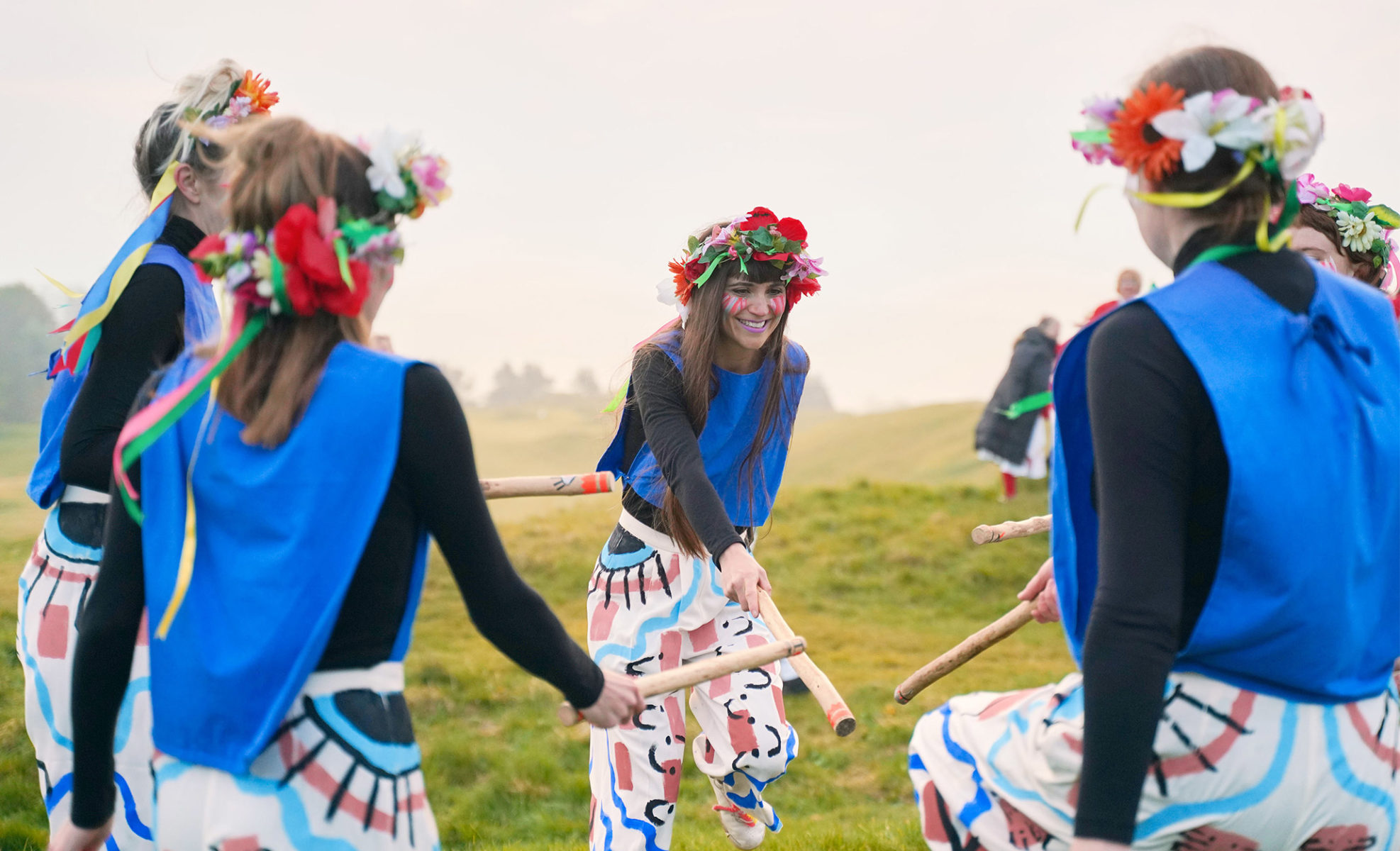
Modern Morris
Not just hankies and bells: we explore a modern, new form of morris dancing with Alex Merry, founder of troupe Boss Morris
By Rachel Ifans
“The history of morris is quite unusual,” says Alex Merry, founder of Boss Morris, an all-women morris-dancing side from Stroud in Gloucestershire. “It always takes people by surprise. Nobody really knows how it began, but it’s first picked up in the 15th century as the highest form of entertainment in royal courts and palaces all across Europe. The costumes were made of silk with golden spangles and it was super athletic; they’d backflip over swords.”
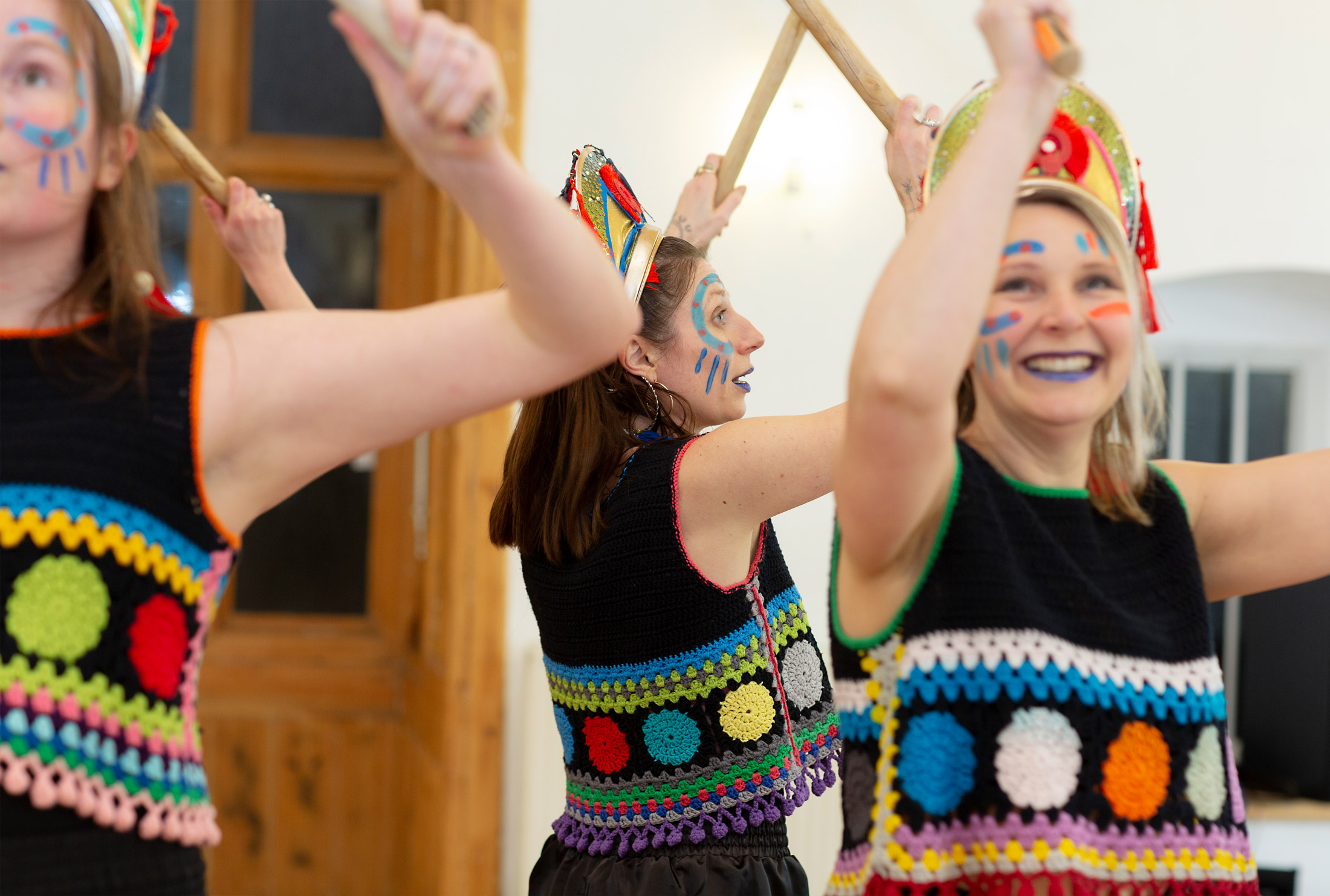
That’s the paganist roots myth busted, then. Now, how about the fact that ‘morrissing’ is a male-dominated sport where women struggle to get a foothold? (After all, the definition in the Merriam-Webster dictionary says morris is ‘a vigorous English dance traditionally performed by men wearing costumes and bells’) Alex smiles: ”It’s a non-story these days, to be honest. The real troopers were the women in the 1970s. They blazed a trail with the Morris Federation in 1975, which was originally set up for women who wanted to dance morris, and who had previously not been allowed to.” Since then, morris dancing has become an inclusive sport; dancers are all about the dances, not the gender of the people who dance them.
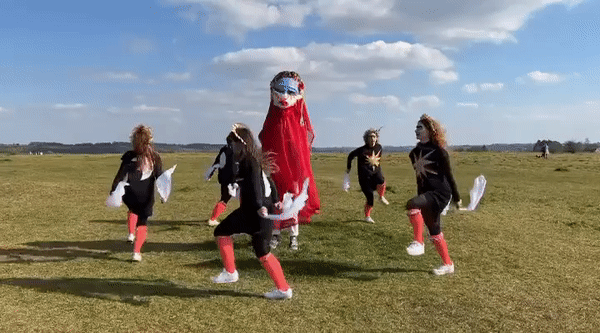
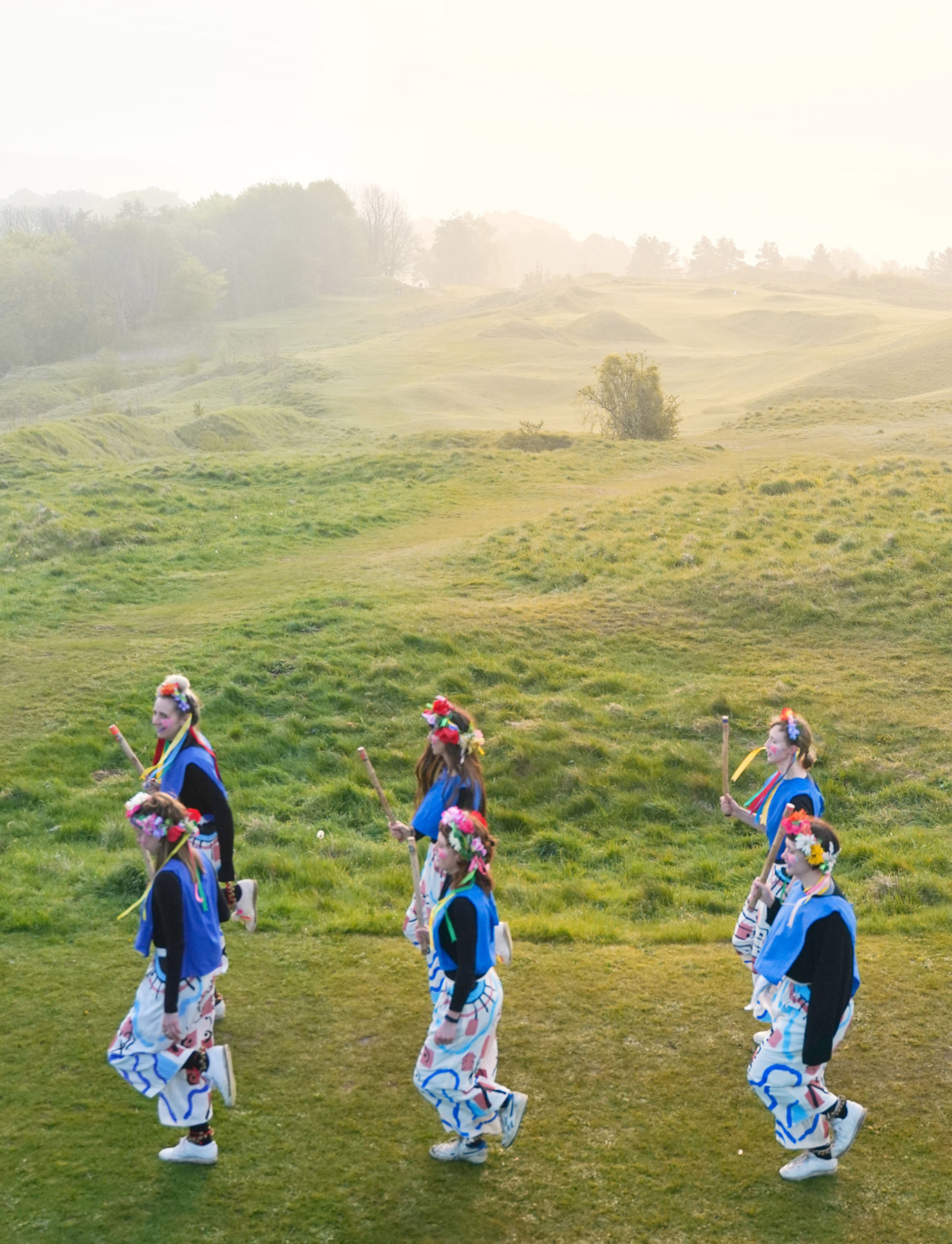
Alex cut her own morrissing teeth in London when she attended classes at Cecil Sharp House, an organisation that champions English folk arts. Her first side, the Belles of London City, got plenty of gigs thanks to the resurgent folk scene in the late 2000s and she greatly missed the morris when she moved back to Stroud. She says: “Mum and dad were both really folky – dad especially was like a chief nerd; he even did morris dancing when he was at university. We had a massive dresser in the dining room of our family home and I’ve got this very early memory of dad hopping around with hankies. It made the dresser doors fly open like they were a portal to another world.”
Stroud is a hotbed of morrissing and it wasn’t long after Alex moved back that she and her sister Kate set up their own side. Enter Boss Morris.“We dance Cotswold Morris,” explained Alex. “It’s a tradition that was collected from villages and towns around the Cotswolds. “It’s so nerdy and lovely because each village had a different way of waggling their hankies, and there are some really weird moves that I imagine came about when some old boy had a gammy leg or something…” she laughs. “Each village had its own style and in time we’d like to develop a collection of our own dances, too.”
INCLUSIVE

In addition to Cotswold Morris, there’s Border Morris, which is a relatively recent tradition from the borders of Wales and England – the ones who famously cover their faces, wear feathers and generally look a bit more menacing; there’s North West, which is all clogs and little swirly buttons; and Carnival Morris, sometimes called Fluffy Morris, a highly competitive and synchronised tradition involving a lot of pom poms.
One thing all the morris traditions have in common is its physicality. If you’re thinking of a slow-mo stepping motion, think again. Says Alex: “To be honest, 20 minutes is probably our maximum time performing a set because it’s so athletic. If we do a set of four dances back to back, it’s a proper sweaty workout.” Boss Morris has twelve members at the moment and Alex is one of the oldest at 42. “The physicality takes everybody by surprise when they’re learning and it’s one of the things that people absolutely love about it. It’s your weekly exercise but it’s not only good physically, it’s also good for your brain because you’re having to remember all the patterns and dance steps as well.”
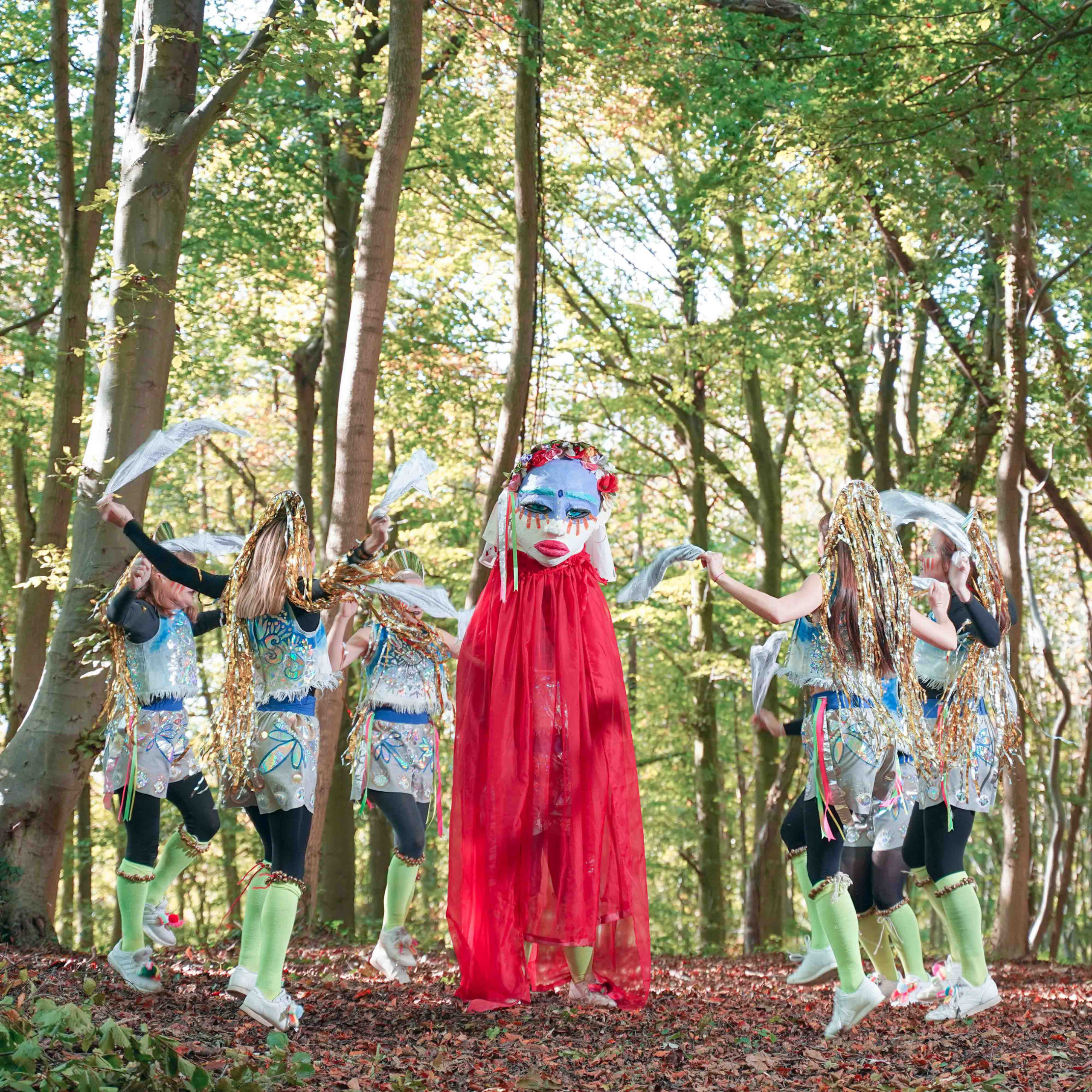
TRADITIONS
“With the jumping,” she explains, “we have to give the impression that we’re basically floating. In most of our dances, our hankies are used to give the impression that we’re jumping twice as high. Morris is an air dance; it’s not really an earthy dance.” Alex reckons it takes about a year of morrissing regularly to really start to get the patterns, shapes and stepping, but she said there’s so much to learn that it’s a bit of a life’s work. While the Boss approach is definitely to learn the traditional dances, its ambitions are to put more of a stamp on their dances too. “I think we’re really developing a style now,” says Alex. “But that takes a long time, right?”
Boss Morris has a deep love and respect for the form; it’s not a case of coming in learning the steps, modernising them, trying to push some boundaries and ultimately making your own mark. The love of the art itself is enough, and there are so many other morrissers out there to learn from and be inspired by. When asked about rivalry between sides, Alex is thoughtful. “If we see a team with lovely patterns in the dancing – in unison, with tidy lines and shapes – we’re impressed. It’s a thing of beauty to see a whole Morris side off the ground in unison with their hankies aloft.”
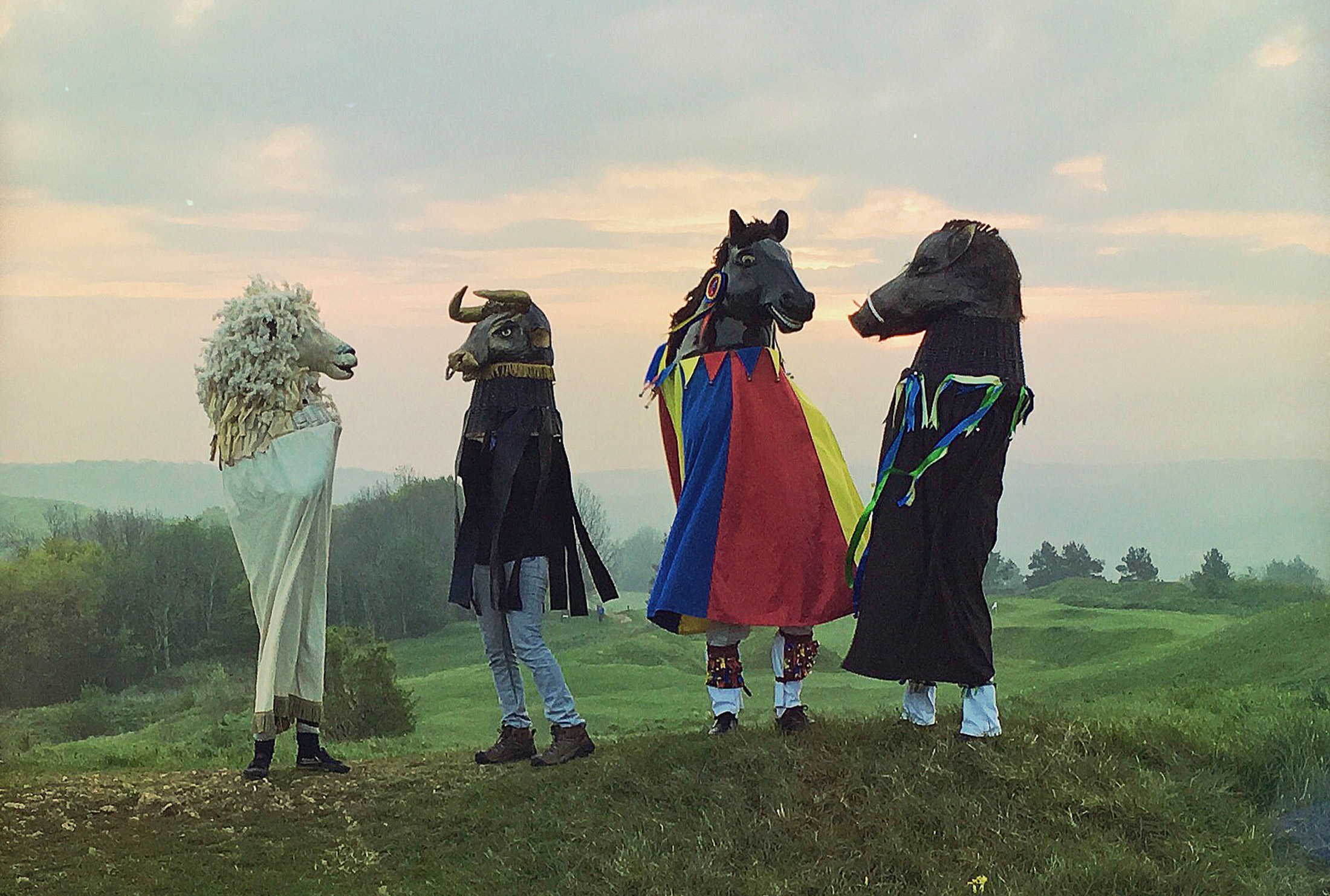
The music is an area where Boss is happy to subvert the norms. They perform to live melodeon music when morrissing locally in the streets near Stroud, but they’ve been asked by many bands over the years to choreograph dances to more modern tracks. Alex said: “We take the building blocks of the morris dance – some stepping, a caper that would fit, or maybe a stick clash – and we make up original dances to completely different music.”
And they’re in the process of developing their own Boss Morris remixes too: “You can basically morris dance over anything that’s rhythmic so dance music is really good for that. It’s so good at festivals or clubs and it’s an amazing way of taking morris to a totally different audience,” Alex explains. Boss has performed in lots of clubs and at festivals such as Glastonbury and Womad, as well as being backing morris dancers for folk icons like Shirley Collins.
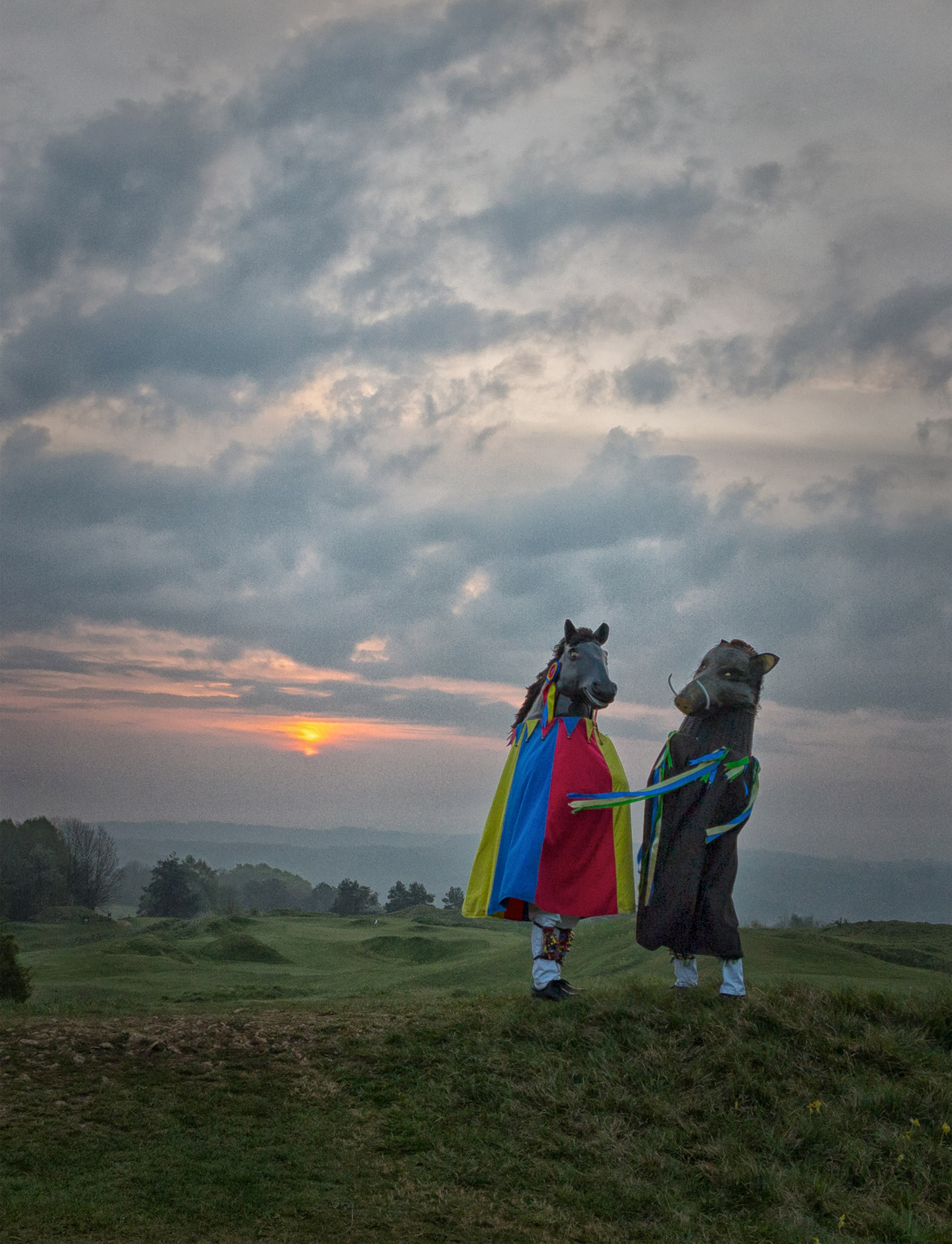
Boss Morris is a glorious mix of traditional and modern, past and future, old and new. It’s ultimately a mainstream morris side which dials up various components to stand apart from others. And costume is one area where they’ve gone ballistic on the traditional form.“If we have a gig coming up, we like to have new costumes. We try to keep costumes fresh and that’s unusual for morris; most sides just have one kit they go back to, but everybody in Boss is a creative so it’s an amazing outlet for us to make or design things.” Boss’s most frequent costume design is a kind of sporty look; a vest top and silky shorts with knee-high socks. “It looks a bit football,” says Alex, “which we kind of like.” The costumes have to be really practical because you can’t dance in anything too floaty or baggy, and you have to think about the practicalities of dancing in summer too: “We need something cool to dance in which doesn’t show sweat patches,” she laughs.
RHYTHMIC
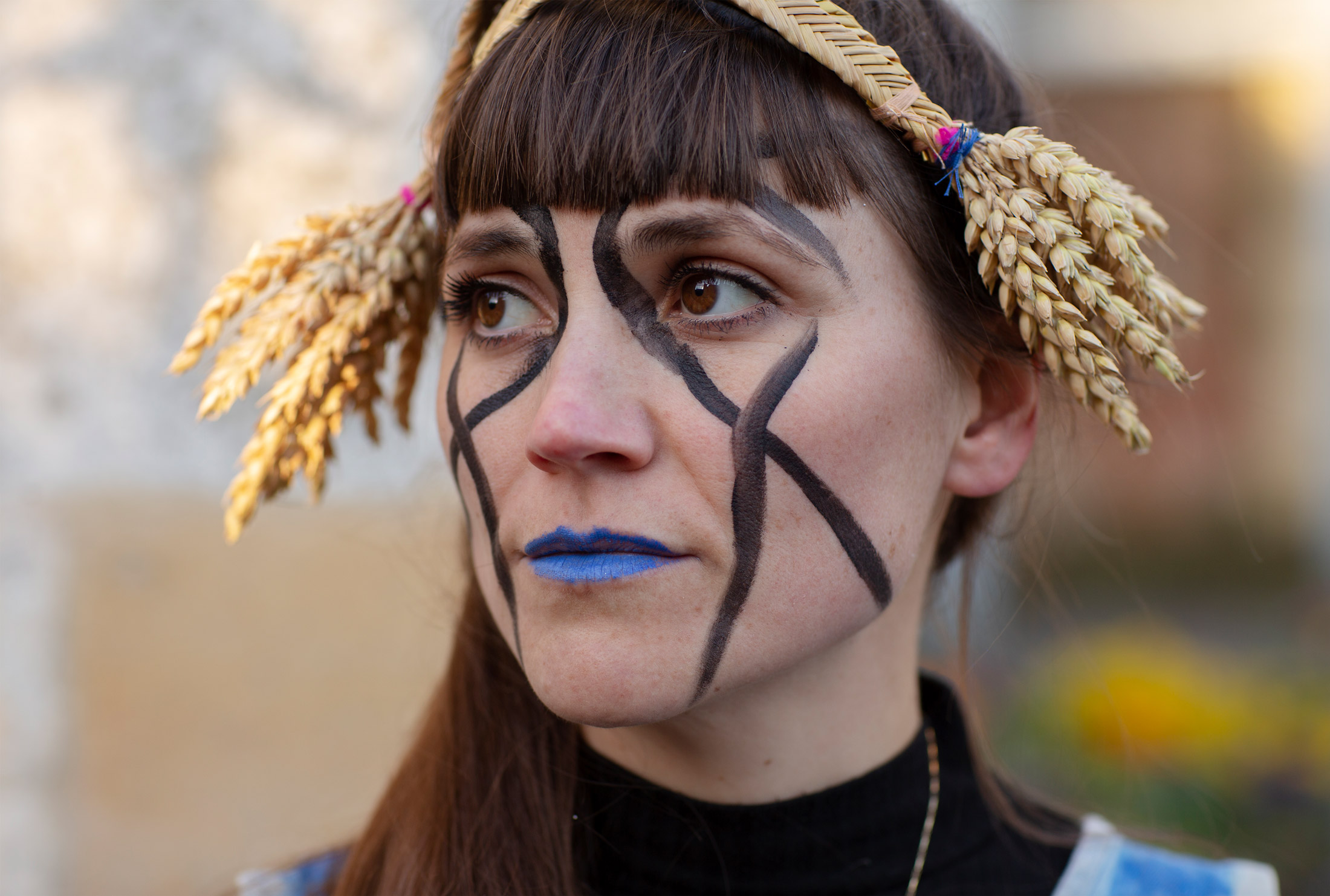
Footy shorts aside, the costumes are fantastic. Recently, they made T-shirt dresses emblazoned with big suns for summer solstice; another time they painted culottes with little diagrams of their dance moves. Says Alex: “We try to weave symbolic meaning into what we’re wearing. For instance, Stroud is really well known for its cloth making so quite a few of our costumes have red squares on the fabric, which is symbolic of the red cloth that used to dry on the fields outside the town.” And then there are the animal heads and the face paints; Boss is definitely the boss of weird beasts. In fact, they’re slightly taking over Alex’s house, shed and her car. “There’s one in the sitting room and Eugene, the sheep, is sitting under a chair in my dining room. I’m kind of known for it around town; people say, ‘oh, there goes Alex’s car, stuffed with animal heads.’”
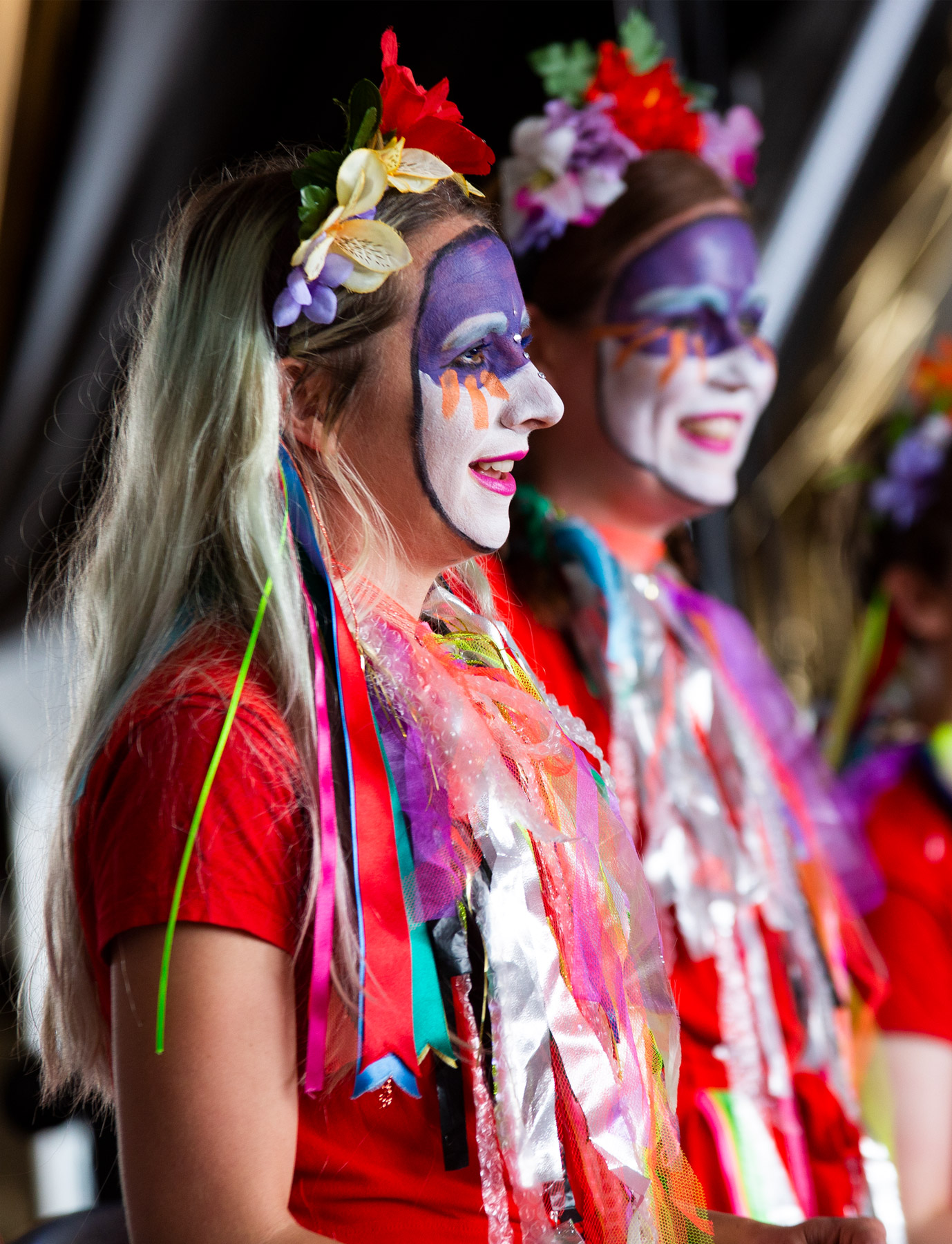
Joking aside, the Boss look – the costumes, the beasts, the crazy face paint – is a huge part of their identity as a side. “I would find it really difficult to just go out in my normal clothes and dance in the middle of the street,” Alex confides. None of the women are performers so the costumes really help them conjure up different personalities. But it always will be the morris bells that chime the loudest. “Putting on your morris bells instantly connects you,” explains Alex. “They’re tendrils right back to the mists of time and they’re instantly transformative.”
Check bossmorris.com for future events.
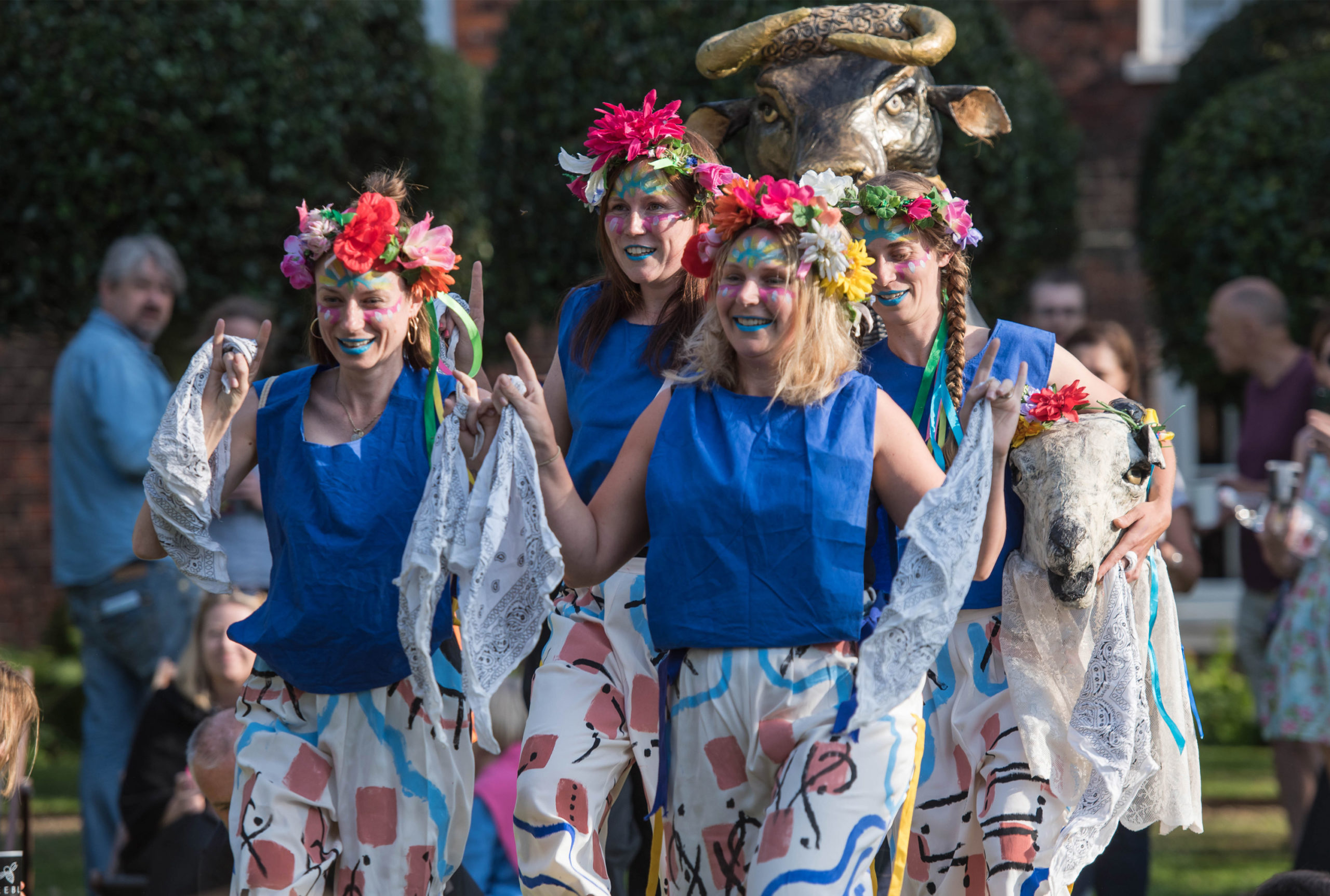
The Simple Things magazine – www.thesimplethings.com

